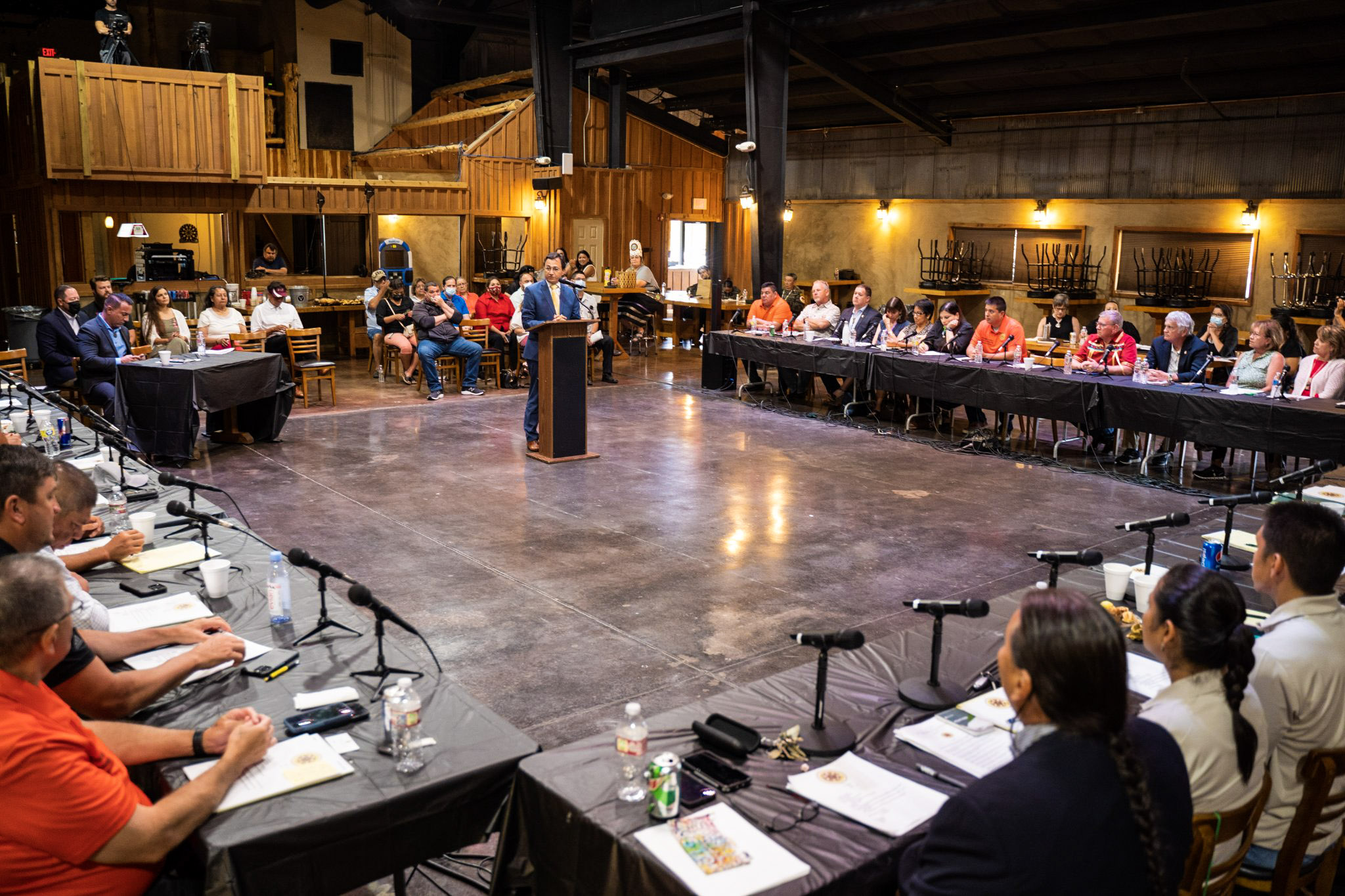Indianz.Com > News > Chuck Hoskin: Cherokee Nation celebrates historic act of unity
Chief Hoskin reflects on the 1839 Act of UnionAs we celebrate the 183rd anniversary of the Act of Union, we are reminded how far we have come as a people. Our ancestors had it right when they said that the Cherokee people are stronger when we are together. In this video, Cherokee Nation Principal Chief Chuck Hoskin Jr. reflects on the events of 1839 that unified the Cherokee people and paved the way for the strong Cherokee Nation that exists today. #ActOfUnion #183years
Posted by Cherokee Nation on Monday, July 11, 2022
183 Years of Cherokee Unity: The Act of Union
Monday, July 25, 2022
Cherokee Nation
Political division. Competing governing factions. Revenge killings.
Whatever our disagreements may be today, nothing compares to what divided the Cherokee people 183 years ago.
In 1839, after the Trail of Tears, the Cherokee people found themselves split. It seemed hopeless.
Earlier migrants to present-day Oklahoma, known as the “Old Settlers,” established a “Western Cherokee” government. The Chief John Ross-led Cherokee Nation government, forcibly removed from the East, saw itself as the duly constituted government of the Cherokees. And, of course the Treaty Party, having ratified the removal treaty at New Echota, remained a force in post-removal Cherokee life.

Chuck Hoskin Jr.
is the 18th elected Principal Chief of the Cherokee Nation, the largest Indian
tribe in the United States. He is only the second elected Principal Chief of the
Cherokee Nation from Vinita, the first being Thomas Buffington, who served from
1899-1903. Prior to being elected Principal Chief, Hoskin served as the tribe’s
Secretary of State. He also formerly served as a member of the Council of the
Cherokee Nation, representing District 11 for six years.
Search
Filed Under
Tags
More Headlines
AUDIO: Legislative Hearing on Discussion Draft of Forest Management Bill
Native America Calling: Remembering the 1974 Navajo border town murders
Native America Calling: Can the right approach close the Native immunization gap?
Cronkite News: Long COVID cases remain high in Arizona
Native America Calling: Eyes in the sky for development, public safety, and recreation
Native America Calling: Three new films offer diverse views of Native life
NAFOA: 5 Things You Need to Know this Week
Chuck Hoskin: Cherokee Nation works toward cure for arthritis
Native America Calling: Protecting young people from the down sides of social media
Cronkite News: Fake ‘shaman’ among candidates failing to make Congressional ballot
Native America Calling: New Native voices in poetry
Cronkite News: Tribes air concerns about border at hearing in nation’s capital
Native America Calling: Indiginerds descend on Oklahoma City
Native America Calling: Political leaders target tribes with unfounded claims
Cronkite News: First Native woman in space shares unique journey
More Headlines
Native America Calling: Remembering the 1974 Navajo border town murders
Native America Calling: Can the right approach close the Native immunization gap?
Cronkite News: Long COVID cases remain high in Arizona
Native America Calling: Eyes in the sky for development, public safety, and recreation
Native America Calling: Three new films offer diverse views of Native life
NAFOA: 5 Things You Need to Know this Week
Chuck Hoskin: Cherokee Nation works toward cure for arthritis
Native America Calling: Protecting young people from the down sides of social media
Cronkite News: Fake ‘shaman’ among candidates failing to make Congressional ballot
Native America Calling: New Native voices in poetry
Cronkite News: Tribes air concerns about border at hearing in nation’s capital
Native America Calling: Indiginerds descend on Oklahoma City
Native America Calling: Political leaders target tribes with unfounded claims
Cronkite News: First Native woman in space shares unique journey
More Headlines